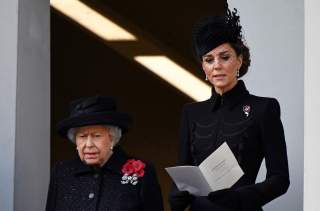Hundreds of Britain's Charities Are About to Become Victims of the Epstein Scandal
The Queen is patron to over 600 charities, as Prince Andrew steps away from his 200, the benefit of royal patronage is being called into question.
Around 3,000 organisations have charitable patronage from a member of the British royal family. That number will soon shrink by around 200 as Prince Andrew steps back from his royal duties. This comes following a BBC interview that focused on his friendship with Jeffrey Epstein, a convicted sex offender, and allegations, which he denied, about his own relationship with a teenage girl.
Patrons are honorary ambassadors who provide support by lending their name.
Royal charitable patronage “adds status” and “provides vital publicity”, according to the monarchy’s website. However, most of the UK’s 200,000 charities function without a royal helping hand. While some claim that royal support stimulates wider giving and volunteering, it’s not possible to capture any specific “added value” of such connection.
The queen is a patron to more than 600 charities, “good causes” that have a combined donated income of around £1.5 billion. However, some donors will be unaware of her patronage, and many might be unmoved by her involvement. As research shows, most donors are driven by a personal connection to a cause.
But some evidence that a royal association helps charities stand out in a crowded and competitive sector, is found in the annual Charity Brand Index. Every year the index, which monitors awareness, trust and likelihood of donating, finds a disproportionate number of top charities feature the word “royal” in their title.
In 2019, three of the top ten enjoyed this mark of favour: the Royal Society for the Prevention of Cruelty to Animals, the Royal British Legion, and the Royal National Lifeboat Institution.
This finding is probably the result of demographics. The most enthusiastic charity supporters are from the oldest age group who also display the highest level of enthusiasm for the monarchy. Unless younger generations become more enthusiastic royalists as they age, the “royal effect” on donations may decline.
Royal events
Further benefits for chosen charities include royal visits with staff, supporters and beneficiaries, as well as the opportunity to hold receptions at Buckingham Palace and other royal residences. They are also able to put a media spotlight on their cause – especially important for those that otherwise struggle to attract positive attention. This was most notably seen with Princess Diana’s patronage of organisations fighting the stigma of AIDS and the anti-landmine movement.
On the other hand, there are also costs to having charity patrons – royal or otherwise. It takes time to manage these relationships that could be spent in other ways, such as directly nurturing high-value donors. Financial and opportunity costs in organising events, such as royal visits, must eventually make a return on that investment in the form of donations.
Annual “fundratio” studies, which compare the effectiveness of different forms of fundraising, show “special events” generate less than half the amounts raised through other fundraising channels – such as legacies and committed giving. When a celebrity or royal patron falls out of public favour, potential reputational damage becomes an additional cost.
Regardless of the personal enthusiasms for the crown held by charity trustees (the nonprofit equivalent of the board) they are compelled to always act in the best interest of the charity. As such, they must make decisions, like cutting ties with toxic patrons or returning “tainted” donations.
Avoiding the attraction of a high-ranking royal
Those charities which calculate that royal patronage is an asset worth having, should resist the temptation to replace the Duke of York with the most prominent or high ranked royal they can get. Research shows that the most valuable celebrity patrons are not the most famous. Rather the ones that have a genuine connection with the cause and are therefore able to speak with moral authority on the issues being addressed.
Prince William and Prince Harry’s support for causes working on child bereavement, mental health and injured veterans, all make sense in relation to their life experiences. Likewise, the Duchess of Sussex, has a clear long-standing commitment to female empowerment reflected in her first patronages.
It’s also worth bearing in mind that the loss of royal patronage may hurt the royals more than those they patronise. As the constitutional role of the monarchy has declined, a historical study argued that the royal family has successfully reinvented itself as fundraisers and cheerleaders for voluntary action. On any given day, the royal diary and the itineraries of overseas tours clearly shows the work of royals is dominated by visits to charitable organisations.
While some members of “the firm”, such as the Princess Royal, attract praise for being hardworking, her less industrious relatives may need charity more than charity needs them.
![]()
Beth Breeze, Director, Centre for Philanthropy, University of Kent
This article is republished from The Conversation under a Creative Commons license. Read the original article.
Image: Reuters

